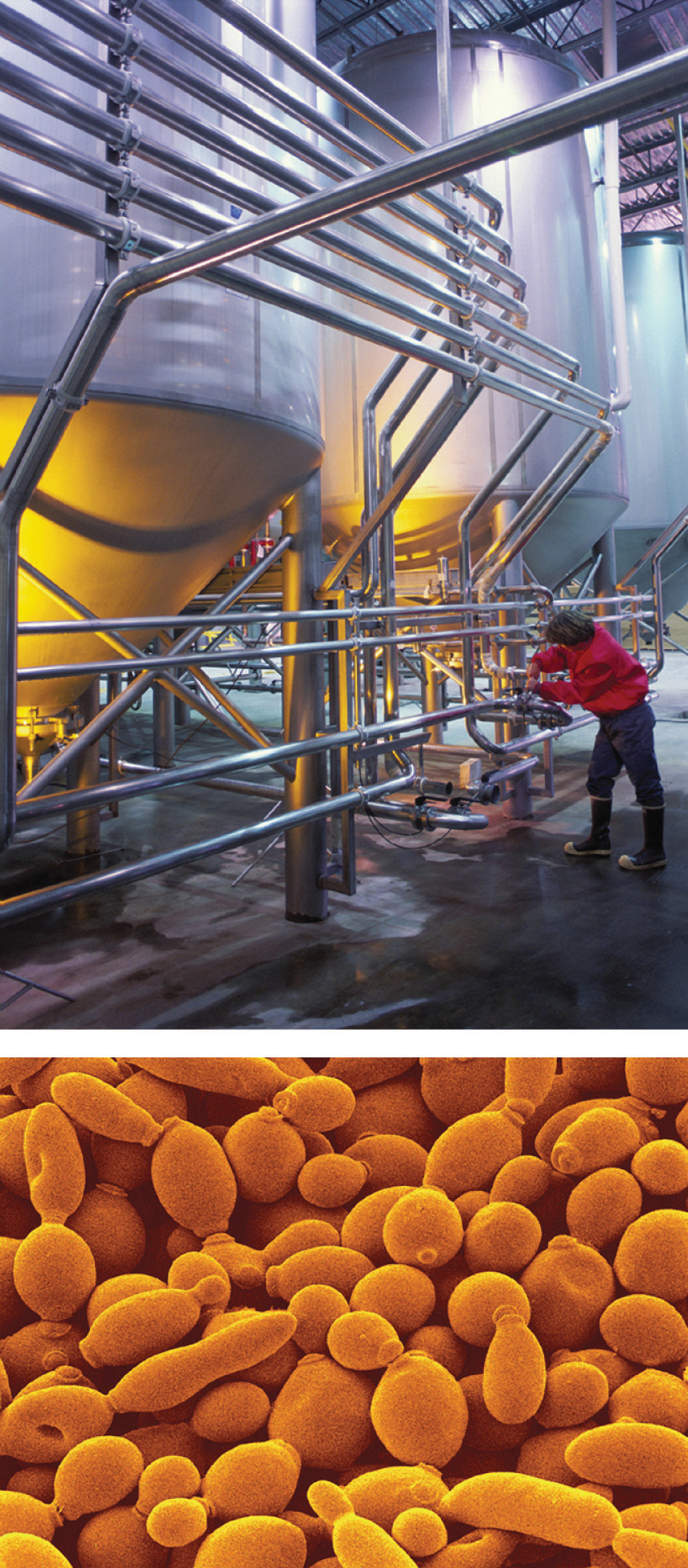Submitted by Aspergillus Administrator on 18 June 2014
 |
| Large fermentors |
Many food processes use enzymes during the production of food. Common examples are alchohol production that uses enzymes from yeast to ferment sugars to make beer, the same organisms are important to enable bread to rise and much more (1,2). These are well known processes that have been in use for thousands of years, but fungi are widely used to ferment many more substances to manufacture other food components.
The above Wiki link describes the following:
- Enrichment of the diet through development of a diversity of flavors, aromas, and textures in food substrates
- Preservation of substantial amounts of food through lactic acid, alcohol, acetic acid, and alkaline fermentations
- Biological enrichment of food substrates with protein, essential amino acids, and vitamins
- Elimination of antinutrients
- A decrease in cooking time and fuel requirement
Somewhat surprisingly the safety of these products have not been assessed formally by the EU (though countries do regulate individually) so this is about to be organised and carried out by EFSA for the 300 existing enzymes.
Many of these foodstuffs are produced by fermentation with Aspergillus. Interestingly the original article mentions this specifically as one assessmetn already completed:
The application relates to a type of food enzyme known as a xylanase. This xylanase is used in starch processing, the distillation of alcoholic drinks and baking processes. It is produced through the fermentation of a strain of Aspergillus oryzae which has a long history of safe use. However, Aspergillus is also known to produce undesirable compounds called mycotoxins as secondary metabolites. The Aspergillus used to produce this food enzyme has been genetically modified to prevent or reduce the formation of these unwanted products. EFSA has conducted a full risk assessment — including an evaluation of toxicity and allergenicity — and found no safety concerns at the proposed uses and use levels.
While on the one hand it might be seen as outrageous that mycotoxin production has not been formally measured before now(!) it is good that there is now clear compliance in relation to food safety. It is equally helpful that these products are also going to be tested for allergenicity – so those people suffering from allergy to Aspergillus (e.g. ABPA patients and 50% of severe asthma patients) are to be better protected and reassured.
News archives
-
Title
Date


